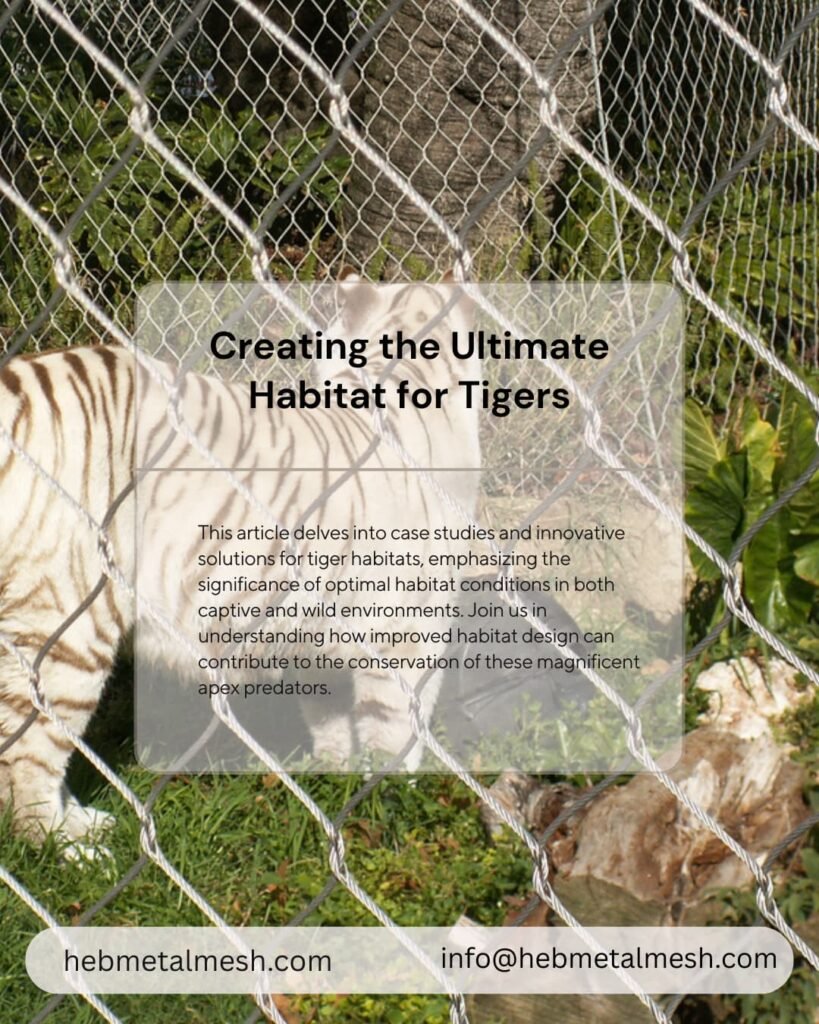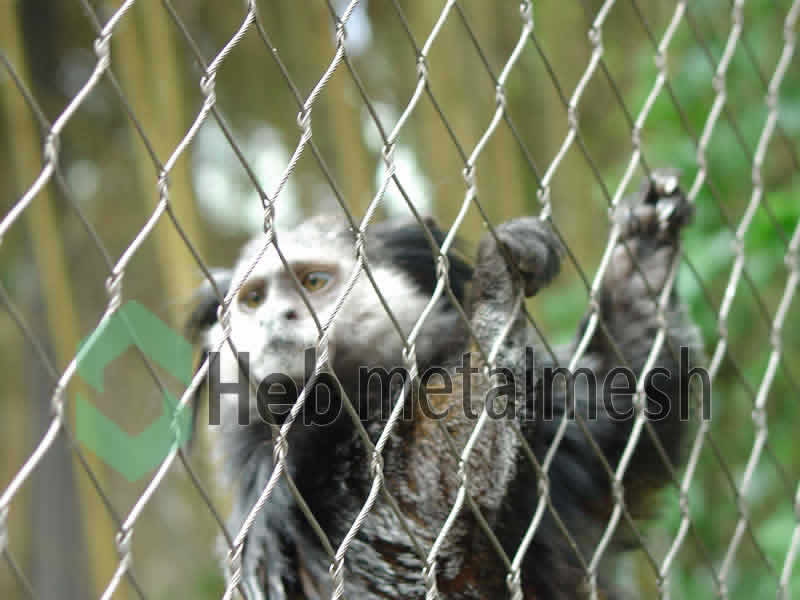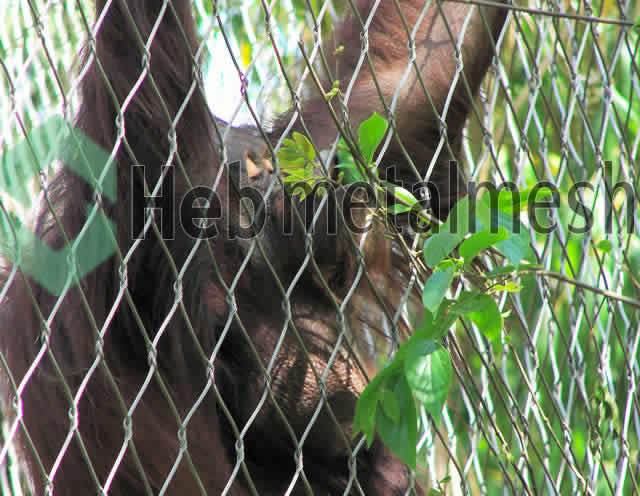Introduction to Habitat for Tiger
Creating a suitable habitat for tigers is crucial not only for their wellbeing but also for the overall conservation efforts aimed at protecting these magnificent creatures. Tigers, being apex predators, require expansive and natural environments that closely mimic their forested and grassland habitats. These habitats should provide ample space for roaming, hunting, and engaging in natural behaviors which are essential for their physical and psychological health. In zoos and wildlife facilities, the design of enclosures ought to reflect the tiger’s needs, incorporating elements such as trees, water features, and varied terrain that encourage activity and stimulate natural instincts.
Natural enclosures play a significant role in the quality of life for both captive and wild tigers. When tigers are housed within environments that closely mirror their wild habitats, they exhibit fewer signs of stress and behavioral issues. Additionally, such installations can significantly aid in breeding programs and rehabilitation efforts by promoting a healthier lifestyle for the animals involved. Unfortunately, many existing tiger habitats worldwide are suboptimal, often lacking the essential components that facilitate a tiger’s natural behavior and comfort. These inadequacies raise important questions about how current captive environments can be improved and what measures should be taken to ensure a long-lasting impact on their conservation.
Moreover, the challenge of enhancing habitats for tigers is intertwined with broader conservation efforts. The survival of tiger populations in the wild is imperative not only for maintaining biodiversity but also for preserving the integrity of their ecosystems. As we further investigate and understand the needs of tigers, it becomes increasingly evident that the development of effective habitat solutions can have significant ramifications on conservation strategies. Tiger habitats are more than just physically comfortable spaces; they must be designed with the future of the species in mind, ensuring that these extraordinary animals can thrive both in captivity and their natural environments.
The Key Elements of a Suitable Habitat for Tiger
Creating an optimal habitat for tigers requires a comprehensive understanding of their physical and psychological needs. One of the primary considerations is the spatial requirement. Tigers are large, solitary cats that need ample space to roam, hunt, and explore. A suitable habitat for tiger care typically spans several hundred square meters, allowing them to exhibit their natural behaviors. In a zoo setting, providing multi-tiered spaces with vertical climbing structures is essential, as it encourages the tigers to engage in natural activities, rather than merely existing within confined areas.
Environmental enrichment plays a vital role in the health and well-being of tigers in captivity. This can encompass a variety of features such as water sources for swimming, diverse vegetation for hiding and stalking behaviors, and various sensory stimuli to keep the animals mentally engaged. For instance, incorporating scents, sounds, and objects that encourage investigation allows tigers to experience challenges that mimic their wild habitats. Enrichment reduces boredom and promotes physical health by encouraging exercise and exploration.
Safety measures are equally important in the design of a habitat for tiger care. It is crucial to ensure that both tigers and visitors are protected effectively. High-quality enclosures made from durable materials like Hebmetalmesh stainless steel zoo mesh provide safety without obstructing visibility, allowing viewers to appreciate these majestic animals in a naturalistic setting. Furthermore, barriers should be designed to prevent escape and accidents, thus ensuring the well-being of both the captured tigers and the general public.
In summary, effectively designing a habitat for tigers requires careful consideration of space, environmental enrichment, and safety measures that combine to foster a healthy, stimulating environment. By recognizing the unique needs of tigers, we can provide better conditions not only for them but also for other species requiring similar habitat considerations.
The Role of Hebmetalmesh in Habitat Construction
In the pursuit of creating optimal habitats for tigers, the materials used in constructing enclosures play a critical role. Hebmetalmesh’s stainless steel zoo mesh products stand out due to their unique features, ensuring that tiger habitats are not only aesthetically pleasing but also robust and secure. One of the primary advantages of utilizing stainless steel is its impressive strength-to-weight ratio. This characteristic allows for the creation of lightweight yet incredibly durable structures that can withstand the physical demands tigers may impose.
Another significant feature of Hebmetalmesh’s products is their flexibility. The stainless steel mesh can be customized to fit various enclosure designs without compromising on strength. This adaptability is crucial when designing a habitat for tigers, as it allows for the creation of diverse spaces that cater to their natural behaviors, such as climbing and exploring. Moreover, the flexibility of the mesh ensures that the layout can be adjusted as needed, accommodating both the tigers’ and zookeepers’ requirements.
In terms of longevity, stainless steel offers superior corrosion resistance compared to traditional materials. This property is particularly beneficial in outdoor settings where environmental factors can lead to rapid degradation. The longevity of the habitat is paramount for the sustained welfare of the tigers, thereby minimizing the need for frequent repairs or replacements. Furthermore, stainless steel is easy to maintain, ensuring that habitats remain hygienic and secure without excessive effort.
Utilizing Hebmetalmesh’s stainless steel zoo mesh in the construction of tiger habitats not only enhances security but also supports the well-being of these magnificent creatures. Through the combination of flexibility, strength, and durability offered by these mesh products, habitats can be designed to meet both the physical and psychological needs of tigers. This consideration is integral in fostering an environment where they can thrive, establishing a habitat that reflects their natural ecosystem as much as possible.
Flexible Zoo Mesh Panels: Specifications and Customization
Hebmetalmesh Stainless Steel Zoo Mesh offers a versatile range of mesh panels and roll products specifically designed to create a secure and sustainable habitat for tigers. These flexible panels cater to various zoo habitat specifications while ensuring the safety and well-being of the resident tigers. With maximum heights of up to 30 feet and widths reaching 60 feet, these offerings are well-suited for diverse environments, from expansive enclosures to carefully designed viewing areas.
Customization is a pivotal aspect of Hebmetalmesh’s product line, enabling facilities to tailor dimensions and configurations that best suit their specific habitat needs. The ability to produce custom rolls not only allows for varied panel sizes but also aids in accommodating unique design considerations dictated by existing landscapes or thematic enclosure requirements. Whether creating a naturalistic jungle setting or a more artificial environment, these customized dimensions can enhance both functionality and aesthetics, which are crucial in promoting the health and habits of the tigers.
Furthermore, Hebmetalmesh provides various options regarding mesh configurations, including different wire diameters and spacing patterns. This customization plays an essential role in balancing visibility for visitors and security for the animals. The mesh design facilitates adequate airflow and natural light penetration, essential aspects when designing a habitat for tiger species, which thrive in well-ventilated and illuminated spaces.
Ultimately, the adaptability offered by Hebmetalmesh allows zoos and wildlife sanctuaries to create effective habitats that not only serve the practical needs of tiger conservation but also enrich the overall visitor experience. By focusing on customized, flexible mesh panels, Hebmetalmesh plays an important role in fostering an environment conducive to the health and well-being of this majestic species.
Nature Colors vs. Black Oxide: Choosing the Right Aesthetic
When constructing a habitat for tigers, the aesthetic aspect of the enclosure plays a crucial role, not only in its visual appeal but also in the psychological well-being of the animals within. The choice between nature colors and black oxide finishes for stainless steel zoo mesh can have significant implications for both the habitat’s integration with the surroundings and the behavior of the tigers. A natural-colored mesh can blend seamlessly into the environment, providing a less obstructive view and allowing the animals to engage more naturally with their habitat. Such colors frequently mirror the earth tones found in the tigers’ native environments, which can lead to a more tranquil atmosphere conducive to their mental health.
On the other hand, black oxide finishes offer a stark contrast to the natural surroundings, which can be visually striking. However, this contrast may emphasize the enclosure boundaries, potentially causing stress for the tigers as they may perceive the walls as barriers. When considering which color is appropriate, various factors should be evaluated, including the geographical location of the zoo and the typical weather conditions. For instance, in dense forest settings, nature colors may offer better camouflage for the mesh, while in more arid or open environments, a black oxide finish may provide an aesthetically pleasing contrast against the landscape.
The choice of color also affects the visitors’ experience. Nature colors foster a more immersive experience, encouraging observers to appreciate the beauty of the tigers in a setting reminiscent of their natural habitat. Conversely, the dramatic look of black oxide can instill a sense of modernity and strength. Ultimately, the decision on the mesh color should consider the habitat for tigers, the local environment, and the overall message that the zoo wishes to convey. This thoughtful selection could enhance not just the enclosure’s functionality, but also its contribution to animal well-being and visitor engagement.
Safety and Security Considerations for Tiger Enclosures
The safety and security of both tigers and the public are paramount when designing an effective habitat for tiger. The design of enclosures must account for the natural behaviors of tigers while employing materials that ensure containment and public safety. One critical aspect is the choice of materials used for the enclosures, where Hebmetalmesh stainless steel zoo mesh offers a robust solution. This type of mesh not only provides strength but also minimizes the risk of tigers escaping or causing harm to visitors.
Incorporating Hebmetalmesh’s stainless steel products as part of an enclosure design can greatly enhance safety features. The strength and durability of this mesh ensure that tigers cannot breach their habitat. Furthermore, its corrosion-resistant properties make it suitable for environments with varying weather conditions, thus maintaining the integrity of the habitat throughout the years.
Additionally, addressing common safety pitfalls is crucial. Enclosures should be designed with adequate height and structural reinforcement to prevent tigers from climbing out. Adequate barriers and precautions must be in place to keep the animals away from public areas, as well. Featuring visible barriers that ensure a clear line of sight for both animals and the public can enhance the overall experience while keeping interactions safe.
The layout of the habitat for tigers should also incorporate natural features, reducing stress and promoting the well-being of the animals while ensuring they remain secure. Providing secure hiding spaces and water sources can mitigate stress-related behaviors, creating a healthier environment. Ultimately, when designing a tiger habitat, an emphasis on the use of superior materials such as Hebmetalmesh stainless steel zoo mesh, combined with careful planning, ensures a secure and sustainable habitat that prioritizes both the safety of these magnificent animals and the welfare of the public.
Case Studies: Successful Tiger Enclosures Using Hebmetalmesh
Tiger habitats in zoos worldwide have benefited from innovative design techniques, with many enclosures successfully incorporating Hebmetalmesh stainless steel zoo mesh. Notable examples serve to highlight the advantages of using this specialized material, optimizing both safety and aesthetics for the magnificent creatures that inhabit these spaces. One exemplary case is the Tiger Exhibit at the San Diego Zoo, which combines naturalistic elements with Hebmetalmesh, creating a strong yet unobtrusive barrier. This design minimizes visual obstruction, allowing visitors to observe tigers in an environment that closely resembles their natural habitat.
Another remarkable case is the tiger enclosure at the Zoo Paris, where significant challenges arose during construction due to the layout of the existing facility. The team turned to Hebmetalmesh products for their flexibility and durability, overcoming spatial limitations while ensuring the safety of both the tigers and the public. This approach not only met safety standards but also enriched the tigers’ living space, mimicking the density of their native habitats. The final outcome showcased tigers freely roaming, providing them with an engaging and stimulating environment that highlights their natural behaviors.
Furthermore, the Ramat Gan Safari in Israel introduced Hebmetalmesh in their tiger habitats to tackle specific local environmental conditions. The stainless steel mesh proved to be an excellent solution, effectively resisting corrosion and wear from elements, thus prolonging the lifespan of the enclosure. In addition, the integration of natural vegetation around the mesh facilitated a seamless blend between habitat and structure, promoting a bio-diverse ecosystem suitable for tigers.
These case studies illustrate the versatility of Hebmetalmesh stainless steel zoo mesh in creating secure, sustainable, and visually appealing habitats for tigers. Not only do they ensure safety, but they also contribute positively to the animal’s well-being and visitor experience. Through thoughtful design and innovative materials, the future of tiger enclosures looks promising, paving the way for continued advancements in habitat construction.
Maintenance and Longevity of Stainless Steel Zoo Mesh
The maintenance and longevity of stainless steel zoo mesh play a crucial role in creating an optimal habitat for tigers. The durability of Hebmetalmesh products offers a strategic advantage for zoos and wildlife facilities, allowing them to maintain safe and effective enclosures with minimal effort. Stainless steel, known for its corrosion resistance and strength, is particularly well-suited for environments that may experience harsh weather conditions or require regular cleaning. This material ensures the structural integrity of tiger habitats over time, which is essential for both animal welfare and visitor experience.
Regular maintenance of zoo enclosures using stainless steel mesh is relatively low compared to other materials. The smooth surface of the mesh allows for easy cleaning, which can be accomplished with basic tools and cleaning agents. This not only saves labor costs but also minimizes disruptions to the tigers’ daily routines. Additionally, the low propensity for rust and degradation means that facilities will not need frequent replacements, making it a cost-effective solution in the long run. Investing in high-quality stainless steel zoo mesh ensures that zoo operators are not constantly burdened with upkeep expenses, allowing them to allocate funds to other essential areas, such as animal care and enrichment programs.
Furthermore, the longevity of stainless steel contributes to the overall sustainability of tiger habitats. By using durable materials that require less frequent replacement, facilities can reduce waste and contribute positively to environmental conservation. The use of Hebmetalmesh products reflects a commitment to maintaining a safe and enriching habitat for tigers. As such, choosing the right materials not only supports animal welfare but also addresses the operational demands of zoo facilities, making stainless steel zoo mesh an ideal choice for those tasked with creating and maintaining effective tiger habitats.
Conclusion: Enhancing Tiger Welfare with the Right Habitat Design
Creating suitable habitats for tigers is critically important for their welfare and survival. Throughout this article, we have explored various aspects of habitat design that significantly contribute to the well-being of these majestic animals. The foundational principle is recognizing that tigers thrive in environments that closely mimic their natural habitats. These habitats must provide ample space, foliage, water sources, and places to hide and roam freely. Only by fostering these essential elements can we ensure that tigers express their natural behaviors, which is crucial for their physical and psychological health.
An equally vital aspect of habitat formation lies in the materials used, particularly when it comes to enclosures in zoos or sanctuaries. The use of Hebmetalmesh stainless steel zoo mesh stands out as a key solution in this arena. This mesh is not only durable and long-lasting, but its design minimizes stress for tigers while giving them a sense of security, mimicking their native habitats. It enables them to engage in natural behaviors while ensuring that they are safely contained. The introduction of such high-quality materials greatly enhances the overall habitat for tigers, representing a significant step forward in tiger conservation.
As we look to the future, the question remains: How will habitat design evolve to meet the changing needs of tigers? Will advancements in materials and design methodologies continue to prioritize the welfare of these animals? In a world that increasingly recognizes the significance of conservation, it is imperative that we remain committed to developing habitats that empower tigers, thereby playing an essential role in the long-term success of tiger conservation efforts. The collaboration between habitat design and modern materials, such as Hebmetalmesh’s innovative solutions, represents a promising path forward for the well-being of tigers in captivity and the preservation of their natural habitats in the wild.


